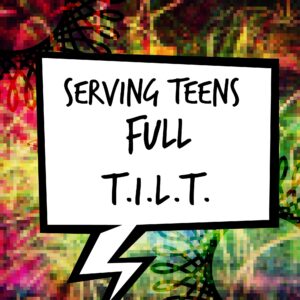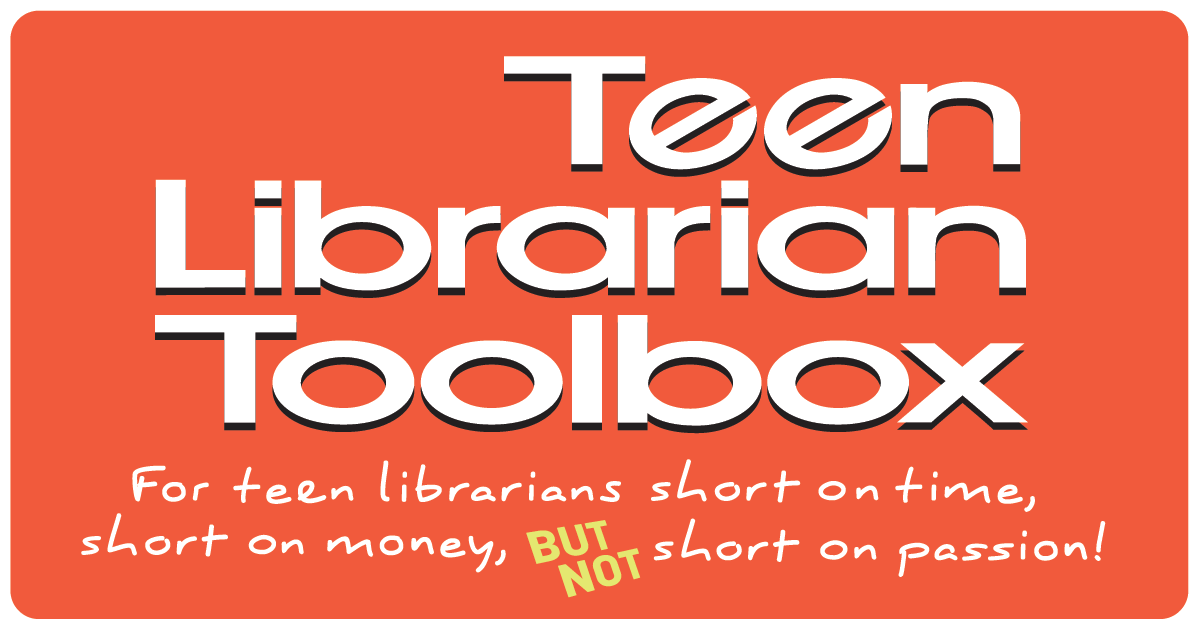Serving Full T.I.L.T.: Teen Brain Science 101
 Our series continues with a brief look at the teen brain. Why? Well, first of all, it’s just really fascinating stuff. But those of us who serve teens need to understand where our patrons are if we are to structure environments, programs, and services that are appropriate to their developmental phase. Additionally, gaining a greater understanding of what is going on physiologically will help us advocate for teens by placing their behavior within the correct developmental context, and by knowing what to do about it.
Our series continues with a brief look at the teen brain. Why? Well, first of all, it’s just really fascinating stuff. But those of us who serve teens need to understand where our patrons are if we are to structure environments, programs, and services that are appropriate to their developmental phase. Additionally, gaining a greater understanding of what is going on physiologically will help us advocate for teens by placing their behavior within the correct developmental context, and by knowing what to do about it.
We’ve known for years that teens’ brains aren’t done maturing until their early twenties, but just what that means, and what is going on as this maturation is happening, is becoming clearer thanks to the newer Functional MRIs (FMRI) technology. These discoveries are fascinating, and go a long way toward explaining the behavior, idiosyncrasies, and habits of the teen years. Turns out, some of the seemingly illogical, frustrating, dangerous, and otherwise difficult behavior that we see from teens has a neurological basis.
ADVERTISEMENT
ADVERTISEMENT
Like a car with a hair-trigger accelerator and soft brakes
Laurence Steinberg, in his 2014 book Age of Opportunity: Lessons from the New Science of Adolescence, uses the above phase to describe the interplay of different brain structures in the actions of teens. Like driving a car with a touchy gas pedal and bad brakes, teens are quick to act – sometimes in risky endeavors – but it takes a lot longer to regulate their behavior and slow down. We see this happen all the time, and now there is a neurological explanation for this behavior.
In the above analogy, think of the limbic system as the accelerator, and the prefrontal cortex as the brakes. The limbic system is made up of a group of brain systems closely connected with strong emotions. Fear, love, sexual excitement, anger – all of this happens in the limbic system. As you might guess, the limbic system in teen brains is highly active, and much more sensitive than that of an adult. In the teen years, the thrill seeking behavior we often see can be explained, in part, by this brain structure. Doing thrilling, dangerous, exciting things gives the limbic system the extra jolt that it is seeking.
What’s more, recent studies have shown that that jolt is even bigger for teens who are observed in these thrill seeking behaviors by their peers. So when teens act differently, brasher, louder, more daring when they’re with their friends than they do one-on-one, it’s not just that they want the social validation that they get from being exciting and brave, their brains are actually craving that encouragement and the limbic system rewards the brain when it gets it.
As all of this is happening, the prefrontal cortex, the logical brain, is in charge of moderating the behavior. It’s the brakes. But in the teen years, it’s still maturing with a long way to go. Teens understand what behavior is risky. They don’t think they’re invincible. But the part of their brains that should catch them and pull them back from dangerous behavior is not as quick as the part that’s shouting Go! Go! Go!
It’s a dangerous combination, and one that we need to be aware of and help guide teens through. That said, it’s a duality not without an evolutionary purpose.
Risk and Reward
ADVERTISEMENT
ADVERTISEMENT
The interplay of limbic system and prefrontal cortex incoordination explains some of the risky behavior, but not all of it, and the jolt to the limbic system seems a fairly short lived reward for all that risk. That’s because there’s more to it. The teen brain is now thought to be going through a similar level of growth to that of a young toddler. That’s immense!
Part of the task of the teenage brain is to make the most of its plasticity. It’s very malleable at this age, and that malleability is what will help teens grow into intellectually curious adults: it’s the activities and experiences during these teen years that will reinforce the neurological pathways that will remain into adulthood as others fall off through the process of synaptic pruning. Risk taking, or novelty seeking, is a way to stretch the brain – and the person – beyond the familiar, and to introduce new and thrilling activities that will serve the adult. Here, thrilling and novel could be anything from learning a new hobby or sport to exploring the world through travel, to learning a new language… or less productive and more dangerous pursuits. The point is that the brain craves newness at this age, and it has a good reason for it.
The brain in real life
All of this is well and good – it’s hardwired and there’s nothing we can do about it so why even bother trying to moderate teen behavior, right? Well, yes and no. The synaptic pruning mentioned above is happening as a result not just of old, unused pathways dying off. The pathways that are reinforced during this age are the ones that will stick around for a lifetime. This is why drug addiction that emerges during adolescence can be much more difficult to quash than those that are acquired in later years. This is also why adults (that’s you!) being involved in and guiding the lives of teens are so crucial. When we offer help, lead them toward library activities, remain steadfast as confidants, encourage them in positive pursuits, welcome them back when we see them, and generally reward the behaviors and attitudes that we hope to see more of, we are essentially tending the pathways that are going to survive the radical pruning that goes on in teen brains.
But don’t just take my word for it.
I’m a librarian by training and education, not a neurologist or psychologist. So let this brief overview pique your interest, but please learn about all of these amazing developments from the researchers and scientists who know far far more about this topic than I do. My resources for this article:
Sarah-Jayne Blakemore: The Mysterious Workings of the Adolescent Brain
National Geographic: Teenage Brains
Frontline: Inside the Teenage Brain
Laurence Steinberg, PhD Research articles and his excellent interview on Here & Now
Next week, the 40 Developmental Assets . . .
Serving Full T.I.L.T. series:
January 14 By the Numbers, making the case for teen services using basic demographic information (Karen Jensen)
January 21 Sarcasm, Spice and Everything Awesome: The Developing Teen (Rebecca Denham)
January 28 Teen Brain Science 101 (Heather Booth)
February 4 Asset Building 101, How using the 40 Developmental Assets can help us plan and evaluate teen programming (Karen Jensen)
February 11 Diverse teens, diverse needs (Eden Grey)
February 18 Sharing stories, how knowing and sharing the stories of our teens can help make the case (Heather Booth)
February 25 Empathy, remembering what it means to be a teen and how it makes us better teen services librarians (Heather Booth)
March 4 A Teen Services 101 Infographic (Rebecca Denham and Karen Jensen)
March 11 Talking Up Teens: Discussing Teen Services with Library Administration (Eden Grey)
Filed under: Serving Full TILT, Teen Development, Teen Issues, Teenage brain
About Heather Booth
Heather Booth has worked in libraries since 2001 and am the author of Serving Teens Through Reader’s Advisory (ALA Editions, 2007) and the editor of The Whole Library Handbook: Teen Servcies along with Karen Jensen.
ADVERTISEMENT
ADVERTISEMENT
SLJ Blog Network
Name That LEGO Book Cover! (#53)
Cover Reveal and Q&A: The One and Only Googoosh with Azadeh Westergaard
K is in Trouble | Review
Fighting Public School Book Bans with the Civil Rights Act
ADVERTISEMENT








I got this website from my friend who informed me regarding this
web site and at the moment this time I am visiting this site and reading very informative articles at this
time.